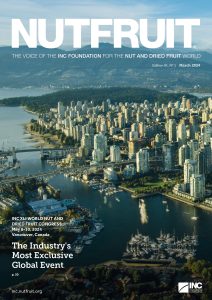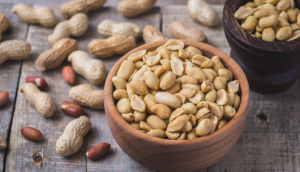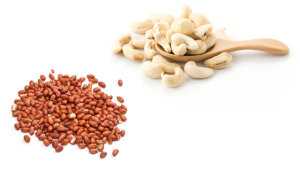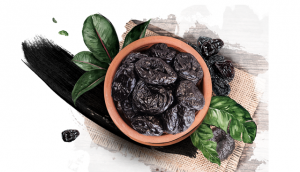Long-term Safety Results of Epicutaneous Immunotherapy (EPIT) with Viaskin Peanut in Peanut-Allergic Children Aged 4-11 Years in the Phase 3 PEOPLE Study
Rationale: Previously reported interim results from PEOPLE (PEPITES Open-Label Extension) demonstrated Viaskin Peanut 250 μg (VP250) led to continued treatment response and was well-tolerated out to 3 years. Here we report PEOPLE end-of-study safety results. Methods: In PEPITES, 356 peanut-allergic participants (aged 4-11 years) were randomized to placebo or VP250. In PEOPLE, 298 participants were treated with open-label VP250 for up to 48 (placebo+VP250) or 60 (VP250+VP250) months. Safety outcomes included duration and severity of treatment-emergent adverse events (TEAEs) and serious TEAEs. Results: 87/298 (29.2%) participants continued treatment in the PEOPLE extension period (Years 4 and 5); mean (range) age was 11.1 (8-16) years. During the Extension Period, there were no discontinuations due to TEAEs, or treatment-related serious TEAEs; 1 (1.1%) participant experienced a treatment-related severe TEAE. Treatment-related TEAEs decreased over time: 63/87 (72.4%) in Year 1 to 9/59 (15.3%) in Year 5. Subjects reporting TEAEs leading to systemic or inhaled corticosteroid use decreased from 20/87 (23.0%) in Year 1 to 1/59 (1.7%) in Year 5. Treatment-related anaphylaxis occurred in 2/87 (2.3%) (Years 1 and 2 only). Treatment-related TEAEs leading to epinephrine use occurred in 1/87 (1.1%) participants (Year 1 only). Overall mean treatment compliance remained high out to 5 years (93%). Conclusions: VP250 treatment over 5 years in PEOPLE showed decreasing frequency and severity of TEAEs, no new safety signals, and high treatment compliance. These data suggest long-term VP250 treatment in peanut-allergic children may have a favorable safety and tolerability profile, which may facilitate its use over multiple years of treatment. https://doi.org/10.1016/j.jaci.2023.11.406
An Unintentional Randomized Trial of Early Environmental Exposure to Peanut: The Younger Siblings of LEAP Participants
Rationale: The Dual Allergen Exposure Hypothesis proposes that food allergy develops due to cutaneous exposure in the absence of oral consumption. Evaluation of the younger siblings of the Learning Early About Peanut (LEAP) participants provides an opportunity to understand the impact of environmental exposure to peanut during infancy and early childhood on the development of peanut sensitization and allergy through a prospective randomized trial of high environmental versus low environmental peanut exposure. Methods: LEAP-Trio evaluated the allergic status of younger siblings who resided in the home of LEAP participants at any time during the LEAP intervention. The primary endpoint was sensitization (defined as skin prick test ≥ 3 mm, peanut specific-IgE ≥ 0.35 kU/L, or Ara h2 ≥ 0.1 kU/L). Results: 144 younger siblings of LEAP avoiders and 154 younger siblings of LEAP consumers participated. Younger siblings of consumers had a higher rate of sensitization than younger siblings of avoiders, 30.4% (41/135) versus 20.0% (26/130) P=0.055, and a higher rate of allergy, 10.0% (15/150) versus 5.0% (7/140) P=0.116. Among younger siblings of LEAP consumers, younger siblings that introduced peanut in the first year of life had a significantly lower rate of sensitization than younger siblings that did not introduce peanut, 18.3% (13/71) versus 44.4% (28/63) (P=0.002). No differences were found in egg or milk sensitization between groups. Conclusions: There was a trend toward increased sensitization and allergy in younger siblings of LEAP consumers, an effect that was greatly reduced if the younger sibling introduced peanut early. https://doi.org/10.1016/j.jaci.2023.11.876
Nuts and seeds consumption impact on adolescent obesity: sex-specific associations from 2003 to 2018 National Health and Nutrition Examination Survey
The nutritional benefits and immunological advantages of consuming nuts and seeds are well-established. However, the link between nuts and seeds consumption and the susceptibility of being overweight or obese among adolescents is not clear. This study aims to explore this relationship in adolescents aged 12-19. Using a weighted multiple logistic regression model, we analysed data of the Food Patterns Equivalents Database and the U.S. National Health and Nutrition Examination Survey (NHANES) from 2003 to 2018. We found a significant association between nuts and seeds consumption and a reduced odds of being overweight or obese in females. Specifically, females who habitually consumed nuts and seeds had lower odds of being overweight or obese (OR = 0.55, 95% CI: 0.32-0.94). Additionally, we found an L-shaped relationship between nuts and seeds consumption and appropriate waist-to-height ratio in males. The findings suggest that nuts and seeds consumption may contribute to healthier physical development in adolescents. https://doi.org/10.1080/09637486.2024.2314682
Nut consumption during pregnancy is associated with decreased risk of peer problems in 5-year-old Japanese children
Objectives: Nuts are nutrient-dense foods rich in unsaturated fatty acids, protein, dietary fiber, vitamins, and minerals. The present prebirth cohort study examined the association between maternal nut intake during pregnancy and the risk of childhood behavioral problems in 5-year-old Japanese children. Methods: Study subjects were 1199 mother-child pairs. Dietary intake was assessed using a diet history questionnaire. Emotional problems, conduct problems, hyperactivity problems, peer problems, and low prosocial behavior were assessed using the parent-reported version of the Strengths and Difficulties Questionnaire. Adjustments were made for a priori-selected nondietary confounders and potentially related dietary factors. Results: Compared with mothers who had not eaten nuts during pregnancy, mothers who had eaten nuts had a significantly reduced risk of peer problems in children; the adjusted odds ratio was 0.64 (95% confidence interval: 0.42-0.97). There were no measurable associations between maternal consumption of nuts during pregnancy and the risk of childhood emotional problems, conduct problems, hyperactivity problems, and low prosocial behavior. Conclusions: Maternal consumption of nuts during pregnancy may be associated with a decreased risk of peer problems in 5-year-old children. https://doi.org/10.1002/jpn3.12177
Bean and Nut Intake Were Protective Factors for Comorbid Hypertension and Hyperuricemia in Chinese Adults: Results from China Nutrition and Health Surveillance (2015-2017)
This study aimed to describe the prevalence of comorbid hypertension and hyperuricemia (HH) and detected the dietary factors for HH in Chinese adults aged 18 to 64 years. All of the data were collected from the China Nutrition and Health Surveillance 2015–2017, with a stratified, multistage, random sampling method on a national scale. A total of 52,627 adult participants aged 18~64 years from the CNHS 2015–2017 were included in this study. HH was identified as SUA level cut-offs for males and females of 420 μmol/L and 360 μmol/L, respectively, with mean systolic blood pressure ≥140 mmHg and/or mean diastolic blood pressure ≥ 90 mmHg and/or received antihypertensive treatment within two weeks. The differences in HH prevalence between or among the subgroups were compared by the Rao–Scott chi-square test. The correlations between HH and covariates or metabolic factors were detected by a weighted two-level multivariate survey logistic regression. The total weighted sufficient intake ratios of beans and nuts, vegetables, and red meat were 59.1%, 46.6%, and 64.8%, respectively. The weighted prevalence of HH in the total participants was 4.7% (95% CI: 4.3–5.0%). The positive effects of bean and nut on HH were observed. The participants who had sufficient bean and nut intake showed lower risk for HH (for the total participants: OR = 0.734, 95% CI = 0.611–0.881). The prevalence of HH might have been a public health problem, and bean and nut intake might be a protective factor for HH in the Chinese population. https://doi.org/10.3390/nu16020192
Almond supplementation on appetite measures, body weight, and body composition in adults: A systematic review and dose-response meta-analysis of 37 randomized controlled trials
Background and objective: Almond consumption has an inverse relationship with obesity and factors related to metabolic syndrome. However, the results of available clinical trials are inconsistent. Therefore, we analyzed the results of 37 randomized controlled trials (RCTs) and evaluated the association of almond consumption with subjective appetite scores and body compositions. Methods: Net changes in bodyweight, body mass index (BMI), waist circumference (WC), fat mass (FM), body fat percent, fat-free mass (FFM), waist-to-hip ratio (WHR), visceral adipose tissue (VAT), and subjective appetite scores were used to calculate the effect size, which was reported as a weighted mean differences (WMD) and 95% confidence interval (CI). Results: This meta-analysis was performed on 37 RCTs with 43 treatment arms. The certainty in the evidence was very low for appetite indices, body fat percent, FFM, VAT, and WHR, and moderate for other parameters as assessed by the GRADE evidence profiles. Pooled effect sizes indicated a significant reducing effect of almond consumption on body weight (WMD: -0.45 kg, 95% CI: -0.85, -0.05, p = 0.026), WC (WMD: -0.66 cm, 95% CI: -1.27, -0.04, p = 0.037), FM (WMD: -0.66 kg, 95% CI: -1.16, -0.17, p = 0.009), and hunger score (WMD: -1.15 mm, 95% CI: -1.98, -0.32, p = 0.006) compared with the control group. However, almond did not have a significant effect on BMI (WMD: -0.20 kg m-2 , 95% CI: -0.46, 0.05, p = 0.122), body fat percent (WMD: -0.39%, 95% CI: -0.93, 0.14, p = 0.154), FFM (WMD: -0.06, 95% CI: -0.47, 0.34, p = 0.748), WHR (WMD: -0.04, 95% CI: -0.12, 0.02, p = 0.203), VAT (WMD: -0.33 cm, 95% CI: -0.99, 0.32), fullness (WMD: 0.46 mm, 95% CI: -0.95, 1.88), desire to eat (WMD: 0.98 mm, 95% CI: -4.13, 2.23), and prospective food consumption (WMD: 1.08 mm, 95% CI: -2.11, 4.28). Subgroup analyses indicated that consumption of ≥50 g almonds per day resulted in a significant and more favorable improvement in bodyweight, WC, FM, and hunger score. Body weight, WC, FM, body fat percent, and hunger scores were decreased significantly in the trials that lasted for ≥12 weeks and in the subjects with a BMI < 30 kg/m2. Furthermore, a significant reduction in body weight and WC was observed in those trials that used a nut-free diet as a control group, but not in those using snacks and other nuts. The results of our analysis suggest that almond consumption may significantly improve body composition indices and hunger scores when consumed at a dose of ≥50 g/day for ≥12 weeks by individuals with a BMI < 30 kg/m2. Conclusion: However, further well-constructed randomized clinical trials are needed in order ascertain the outcome of our analysis.
https://doi.org/10.1111/obr.13711
Almond Consumption May Improve Body Composition Indices and Hunger Scores
Eating at least 50 grams of almonds per day was associated with improvements across several indicators
In a study published recently in the journal Obesity Reviews, researchers set out to understand the relationship between almond consumption and subjective appetite scores and body composition.
The study was a systematic review and dose-response meta-analysis of 37 randomized controlled trials with a total of 43 treatment arms. Net changes in bodyweight, body mass index, waist circumference, fat mass, body fat percent, fat-free mass, waist-to-hip ratio, visceral adipose tissue and subjective appetite scores were used to calculate the effect size.
Pooled effect sizes indicated a significant reducing effect of almond consumption on body weight and hunger score compared with the control group. Subgroup analyses showed that consuming at least 50 grams of almonds per day resulted in a significant and more favorable improvement in bodyweight, waist circumference, fat mass and hunger score. Body weight, waist circumference, fat mass, body fat percent and hunger scores decreased significantly in trials that lasted for 12 weeks or more, and in participants with a body mass index higher than 30 kg/m2. Moreover, a significant reduction in body weight and waist circumference was observed in trials that used a nut-free diet as a control group.
The findings suggest that consuming at least 50 grams of almonds per day for at least 12 weeks may significantly improve body composition indices and hunger scores in individuals with a body mass index higher than 30 kg/m2.
Chahibakhsh, N., Rafieipour, N., Rahimi, H., RajabiNezhad, S., Momeni, S. A., Motamedi, A., Malekzadeh, J., Islam, M. S., & Mohammadi-Sartang, M. (2024). Almond supplementation on appetite measures, body weight, and body composition in adults: A systematic review and dose-response meta-analysis of 37 randomized controlled trials. Obesity Reviews, 10.1111/obr.13711. Advance online publication.
Early Introduction of Peanut Associated With Lower Sensitization and Allergy
Younger siblings of peanut consumers fared better when peanut was introduced early
In a recent study published in the Journal of Allergy and Clinical Immunology, researchers tested the hypothesis that peanut allergy develops as a result of cutaneous exposure in the absence of oral consumption. Evaluation of the younger siblings of participants in the Learning Early About Peanut (LEAP) study provided an opportunity to understand the impact of environmental peanut exposure during infancy and early childhood on the development of peanut sensitization and allergy.
The study was a prospective randomized trial of high environmental versus low environmental peanut exposure. Researchers evaluated the allergic status of younger siblings who resided in the home of LEAP participants at any time during the LEAP intervention. The study included a total of 144 younger siblings of peanut avoiders and 154 younger siblings of peanut consumers.
Among younger siblings of peanut consumers, those who started eating peanut in the first year of life had a significantly lower rate of sensitization than those who did not introduce peanut in the first year of life. The researchers concluded that the trend towards increased sensitization and allergy in younger siblings of peanut consumers was greatly reduced if the sibling introduced peanut early.
Lack, G., Du Toit, G., Radulovic, S., Feeney, M., Fischer, H., Byron, M., ... & Huffaker, M. (2024). An Unintentional Randomized Trial of Early Environmental Exposure to Peanut: The Younger Siblings of LEAP Participants. Journal of Allergy and Clinical Immunology, 153(2), AB367.
Nut Consumption During Pregnancy Associated With Lower Risk of Peer Problems in 5-Year-Olds
Study confirms relationship between maternal nut intake and childhood behavioral problems
A recent study published in the Journal of Pediatric Gastroenterology and Nutrition explored the association between maternal nut intake during pregnancy and the risk of childhood behavioral problems in 5-year-old children in Japan.
A total of 1,199 mother-child pairs were included in this prebirth cohort study. Researchers assessed dietary intake using a diet history questionnaire. The parent-reported version of the Strengths and Difficulties Questionnaire was used to assess emotional problems, conduct problems, hyperactivity problems, peer problems and low prosocial behavior.
Compared with children whose mothers who had not eaten nuts during pregnancy, children whose mothers did eat nuts had a significantly reduced risk of peer problems. The findings suggest that maternal consumption of nuts during pregnancy may be associated with a decreased risk of peer problems in children at five years of age. The researchers acknowledge the need for additional epidemiological studies and studies to investigate the mechanisms underlying the observed preventive association.
Nguyen, M. Q., Miyake, Y., Tanaka, K., Hasuo, S., Nakamura, Y., Okubo, H., Sasaki, S., & Arakawa, M. (2024). Nut consumption during pregnancy is associated with decreased risk of peer problems in 5-year-old Japanese children. Journal of Pediatric Gastroenterology and Nutrition, 10.1002/jpn3.12177. Advance online publication.
March 2024 News Brief
Secure Your Spot at the Exclusive INC Congress in Vancouver
Be a part of the prestigious gathering for the nut and dried fruit sector
 Gather with 1,300+ esteemed company owners, presidents and CEOs from prominent global corporations from May 8-10 to gain insights, forge connections and conduct business with professionals from 65 countries. Over the three-day event, 60+ speakers will provide invaluable insights into market trends, crop forecasts and industry trajectories. With 1,100 industry leaders from 450 companies already confirmed, don’t miss out! [Register now]
Gather with 1,300+ esteemed company owners, presidents and CEOs from prominent global corporations from May 8-10 to gain insights, forge connections and conduct business with professionals from 65 countries. Over the three-day event, 60+ speakers will provide invaluable insights into market trends, crop forecasts and industry trajectories. With 1,100 industry leaders from 450 companies already confirmed, don’t miss out! [Register now]
Hurry! Limited Exhibit and Sponsorship Opportunities Remain
Last chance to showcase your brand to this specialized audience
Increase your brand’s exposure by sponsoring or exhibiting at the INC Congress in Vancouver and across the INC network through pre-event communications!
- Don’t miss out on the chance to elevate your brand with sponsorships like Golf & Tennis, Panel Sessions, Exclusive Gift and Standard Sponsorship! [Sponsor now]
- Last booth space remains in Nutfruit Plaza, the hub of congress activities. [Exhibit now]
INC Confirms Keynotes and Guest Speakers
Gain insider knowledge from these top professionals
Keynote speakers:
- Marc Low, Director, Innovation & Emerging Technology, KPMG Canada [Read more]
- Prof. Janice Gross Stein, Belzberg Professor of Conflict Management and the Founding Director of the Munk School of Global Affairs and Public Policy, University of Toronto, Canada [Read more]
Guest speakers for Nutrition Research Seminar:
- Dr. John L. Sievenpiper, Professor, Departments of Nutritional Sciences and Medicine, University of Toronto, Canada [Read more]
- Dr. Kristina Petersen, Associate Professor, Professor in Charge, Graduate Program in Nutritional Sciences, Department of Nutritional Sciences, Penn State University, USA [Read more]
Guest speakers for Sustainability Seminar:
- Julie Adams, Vice President, Global Technical & Regulatory Affairs, Almond Board of California, USA [Read more]
- Miriam Gautier, Managing Director, Bösch Boden Spies, Germany [Read more]
- Dr. Miriam Villen King, Chief Scientist, Stahmann Webster, Australia [Read more]
Check Out the Latest Issue of the Nutfruit Magazine
March issue available online

The March 2024 issue of Nutfruit is now available on the INC website. This edition covers a wide range of topics and provides valuable insight into the nut and dried fruit industry. You can read about how the INC is harnessing consumer awareness to drive global nut and dried fruit consumption and whet your appetite for this year’s INC Congress in Vancouver. In the Feature Articles section, you can read about successful programs to improve the environmental and social impact of nuts, an ambitious groundwater recharge project, and more. This issue also features interviews with Tomás Treschanski, one of Argentina’s first chefs to receive a Michelin star, as well as Jodie Johnston, Category Technical Manager – Food on the Move, Prepared Produce, Café & Hospitality at Marks & Spencer. You can also learn about Brazil nuts from the Amazon Rainforest in this edition of the Country/Product Spotlight and read up on the latest industry statistics in our Global Statistical Review. Download to read it now! [Read Nutfruit online]
New Discovery in Peanut Defense Mechanisms Against Aflatoxins
The findings hold promise for the future development of fully resistant varieties

A recent study shed light on the natural resistance exhibited by some peanut varieties to Aspergillus flavus infection and subsequent aflatoxin contamination. Researchers used a metabolomics-based systems biology approach to understand the biochemistry behind increased peanut resistance to Aspergillus infection. The study reports the linkage between two specific metabolites and the level of resistance exhibited by peanut varieties. The two key metabolites, hydroxycinnamic acid amides (HCAAs) and lignin precursor levels, were higher in the resistant genotype. [Read more]
FDA Approves Medication to Help Reduce Allergic Reactions to Peanut and Cashew
Xolair is the first and only FDA-approved medicine to reduce allergic reactions in people with one or more food allergies

On February 16, 2024, the U.S. Food and Drug Administration (FDA) approved Xolair (omalizumab) injection for immunoglobulin E–mediated food allergy in certain adults and children 1 year or older for the reduction of allergic reactions —including reducing the risk of anaphylaxis— that may occur with accidental exposure to one or more foods, including peanuts and cashews. The safety and efficacy of omalizumab in reducing allergic reactions in subjects with food allergies was established in a clinical trial... [Read more]
Sustainability Updates

The INC’s latest installment of sustainability news includes updates on several key proposals currently making their way through the EU legislative process —including the Green Claims Directive, the Corporate Sustainability Due Diligence Directive and the proposed revision of the Waste Framework Directive— as well as Australia’s decision to include sustainability factors in the next edition of the country’s official dietary guidelines. [Read more]
International Trade News

The INC’s latest trade news update includes information about Kenya’s publication of a draft standard on almond kernels, new phytosanitary import requirements in Chile, Panama and Türkiye, a free trade deal between Sri Lanka and Thailand, and China’s announcement of the addition of almond hulls to its official feed ingredients catalogue, paving the way for the import of these products. [Read more]
Food Safety Updates

The INC’s latest food safety news covers the publication of the FAO’s updated General Standard for Food Additives (GSFA) database, EU regulatory changes affecting plant protection products, a UK regulation seeking to control high-risk food and food not of animal origin imported into Great Britain, and the European Commission’s first monthly Report on EU Agri-Food Fraud Suspicions. [Read more]
Marketing Orders

The INC’s latest update on marketing orders covers a decrease in the assessment rate for hazelnuts grown in Oregon and Washington, the suspension of the federal marketing order regulating dried prunes produced in California, and the announcement of a referendum for eligible US peanut producers to decide whether to continue their research and promotion program. [Read more]



